INTERNACIONAL
As Israel faces blame for the hunger crisis in Gaza, UN’s own data shows most of its aid is looted
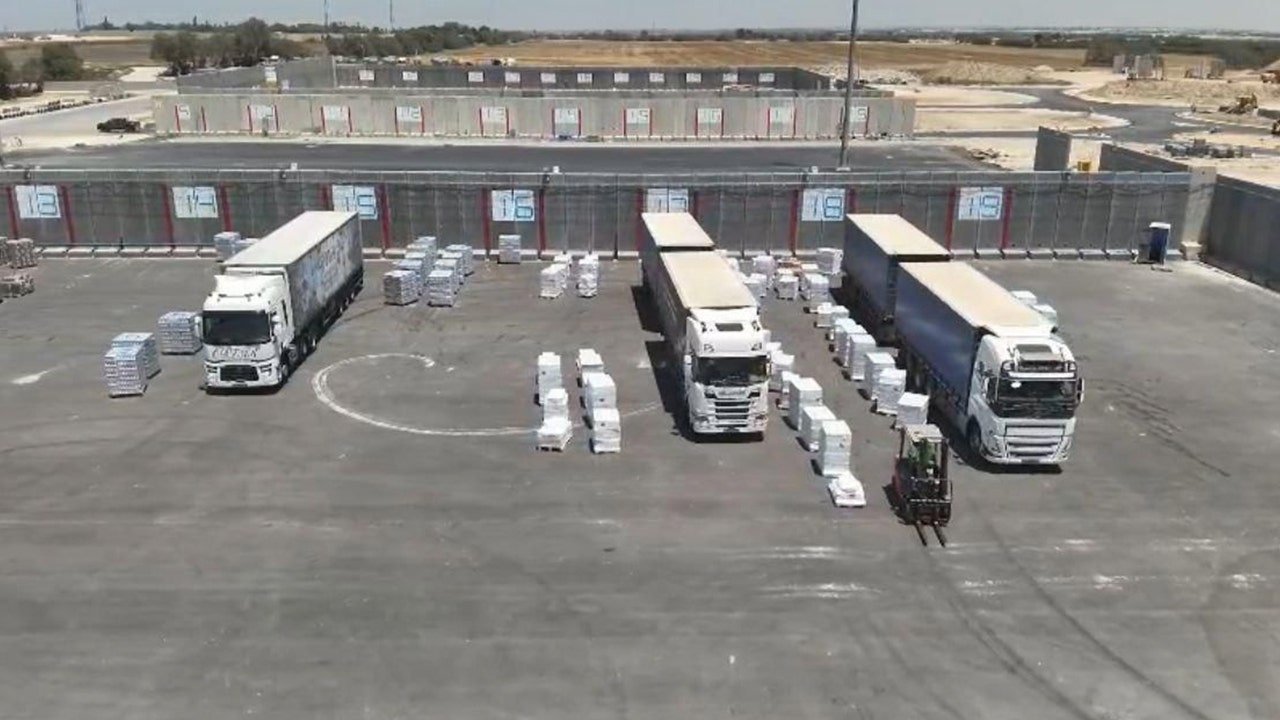
NEWYou can now listen to Fox News articles!
New data published last week by the U.N. agency UNOPS shows that most of its aid entering the war-torn Gaza Strip has been looted inside the Palestinian territory. UNOPS provides management services for the world body’s own humanitarian operations.
Despite this, condemnation of Israel over the hunger crisis in Gaza has been ramping up, prompting an increasing number of Western governments to declare intentions to recognize a Palestinian state as punishment, and leading some media outlets to totally tune out the role both international humanitarian organizations and Hamas, whose October 2023 mass terror attack in Israel started the nearly two-year-old war, have played in this catastrophe.
«Nobody is able to have nuance in this conflict or hold multiple truths and that’s part of why everybody from journalists to NGOs to U.N. officials, the pro-Palestine people, activists and advocates, parrot the same talking points that there’s no aid theft and that everything is Israel’s fault,» Ahmed Fouad Alkhatib, a senior fellow at the Atlantic Council, told Fox News Digital.
US REPORT URGES UN AGENCY’S SHUTDOWN OVER HAMAS TIES, OCT 7 TERROR LINKS
The IDF said that 121 trucks of aid from «the UN and the international community» crossed into Gaza on May 28, 2025. (IDF Spokesperson’s Unit)
Alkhatib, a Gaza-born American, said that while the U.N. and other NGOs were «playing politics» by ignoring their own failures so as not to jeopardize funding and because they are terrified of Hamas, Israeli leaders were also «exaggerating» claims about Hamas being the only ones to loot the aid. A close observer of events in Gaza, he described a chain of thievery and extreme price hikes perpetrated by civilians and merchants that have all contributed to the misery there.
He added that statements by some Israeli government ministers about cutting off aid to force Gazans out of the territory have not helped either.
«Their statements have become the story under which nothing else will fit… no amount of evidence, no amount of clarification, no amount of nuance is going to come anywhere near to grabbing that much attention,» Alkhatib said.
Farhan Aziz Haq, a spokesman for U.N. Secretary-General António Guterres, confirmed to Fox News Digital that some aid had been stolen but said it was because so few supplies had entered Gaza in recent months that «people facing hunger have resorted to offloading supplies directly from our convoys,» he said.
«We understand the frustration, but let’s be clear: this isn’t our system. It’s what happens when aid is squeezed through too few routes after months of deprivation,» he claimed, adding «only a steady, reliable flow of aid and commercial supplies can restore people’s belief that aid will arrive and allow for safe, orderly distributions,» he claimed.
Information posted on the website of UNOPS, the U.N. Office for Project Services, shows that around 87%, or 1,753 of the 2,013 aid trucks that entered Gaza since May 19 did not reach their final destinations, with the aid being stolen either «peacefully by hungry people or forcefully by armed actors.»
ISRAEL ANNOUNCES IMMEDIATE RESUMPTION OF GAZA AID AIRDROPS AMID GROWING HUNGER CRSIS
The data, which showed that a record 90 trucks carrying some 1,695 tons of aid were looted on May 31 alone, comes as shocking photos of emaciated Palestinian children – some of which were later proven to be children with pre-existing health conditions used as propaganda by Hamas – have gone viral.
The revelations about the U.N.’s faulty aid system also come amid worldwide condemnation of the Gaza Humanitarian Foundation (GHF), a new U.S. and Israel-backed aid distribution mechanism, devised, in part, to prevent aid from falling into Hamas’ hands. The U.N. has refused to cooperate with the GHF. The aid group announced on Sunday that it had delivered nearly 105 million meals to Gazans since it started operations in May.
It also comes in sharp contrast to reports by some media outlets who chose to ignore evidence of Hamas stealing and reselling aid in order to fund its ongoing war – seemingly as a way to suggest that Israel is using starvation as a tactic of war or committing «genocide.» Israel has emphatically denied both claims.
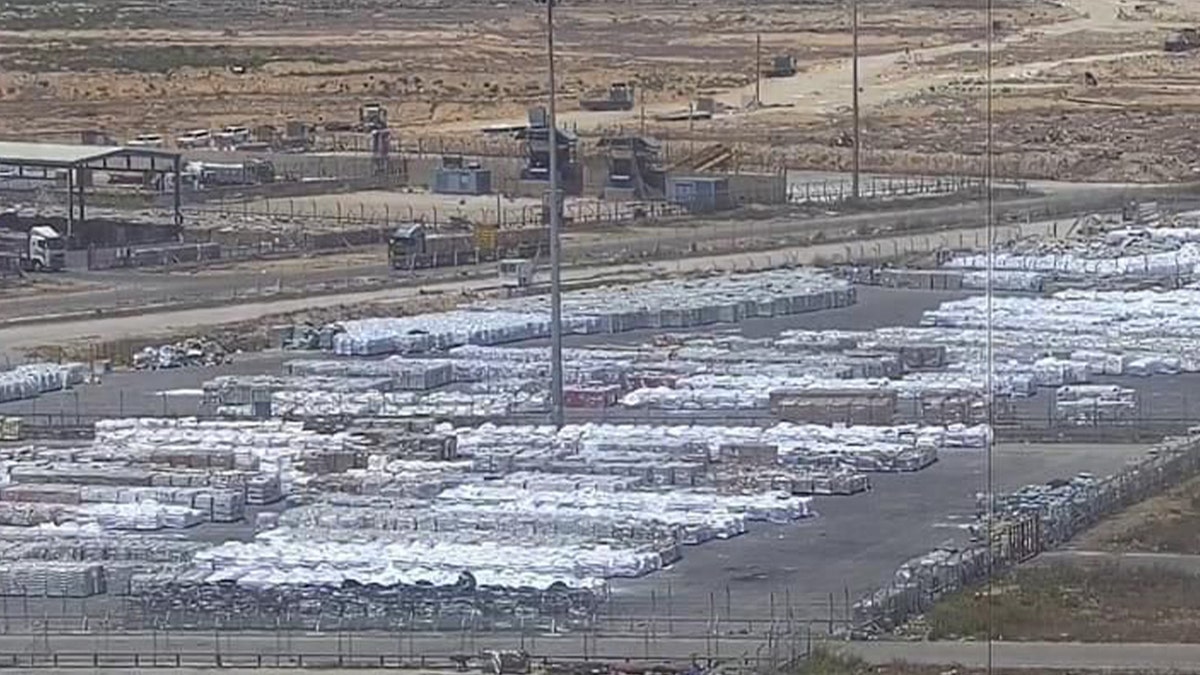
Israel’s Coordination of Government Activities in the Territories (COGAT) posted this photo that shows humanitarian aid pallets waiting to be distributed in Gaza. (COGAT)
A recent article in the New York Times even went as far as reporting that there was «no proof» that Hamas had stolen U.N. aid, despite countless documented accounts, including from freed Israeli hostages who reported seeing stockpiles of U.N.-branded products inside Hamas tunnels.
Kobi Michael, a senior researcher at the Institute for National Security Studies in Tel Aviv, said that not only did human rights organizations and many media outlets base their faulty reports on information published by Gaza’s Ministry of Health, which is run by Hamas, they also did not «take the nature of Hamas seriously.»
«Hamas is not the most reliable source in the world,» he said, adding that «the international media and other sources do not consider the interests of Hamas, or its strategy, and they do not seem to acknowledge that Hamas wants a chaotic situation in the Gaza Strip. Hamas wants there to be many casualties among Palestinian civilians, because it serves their interests.»
GAZA HUMANITARIAN FOUNDATION: WHAT TO KNOW ABOUT THE US-BACKED AID GROUP
«Just to listen to what Hamas leaders have been saying since October 7,» Michael continued. «They have promised to repeat October 7 again and again, they have called on the Arab world to join the armed resistance against Israel and on the Arab public to pressure their regimes.
«They have also said publicly, and loudly, that they have no problem sacrificing another 100,000 Palestinian civilians for the sake of the victory,» he said.

Hamas terrorists stand in formation as Palestinians gather on a street to watch the handover of three Israeli hostages to a Red Cross team in Deir el-Balah, central Gaza, on Feb. 8, 2025. (Majdi Fathi/NurPhoto via Getty Images)
Yet the GHF has faced scrutiny and blame for the humanitarian disaster unfolding in Gaza amid daily reports by Hamas-backed bodies of civilian deaths at or near their aid distribution points and following chaotic images of people fighting over the food packages or sheltering from gunfire. The new agency has hit back, saying that Hamas, the U.N. and other international aid agencies, are just hoping the initiative fails so they can control all aid operations in Gaza.
On Friday, U.S. Special Envoy Steve Witkoff, together with U.S. Ambassador to Israel Mike Huckabee, visited southern Gaza to inspect one of GHF’s aid distribution sites.
«Went into Gaza today & observed humanitarian food program by U.S. launched GHF. Hamas hates GHF b/c it gets food to ppl w/o it being looted by Hamas. Over 100 MILLION meals served in 2 months,» Huckabee wrote in a post on X.
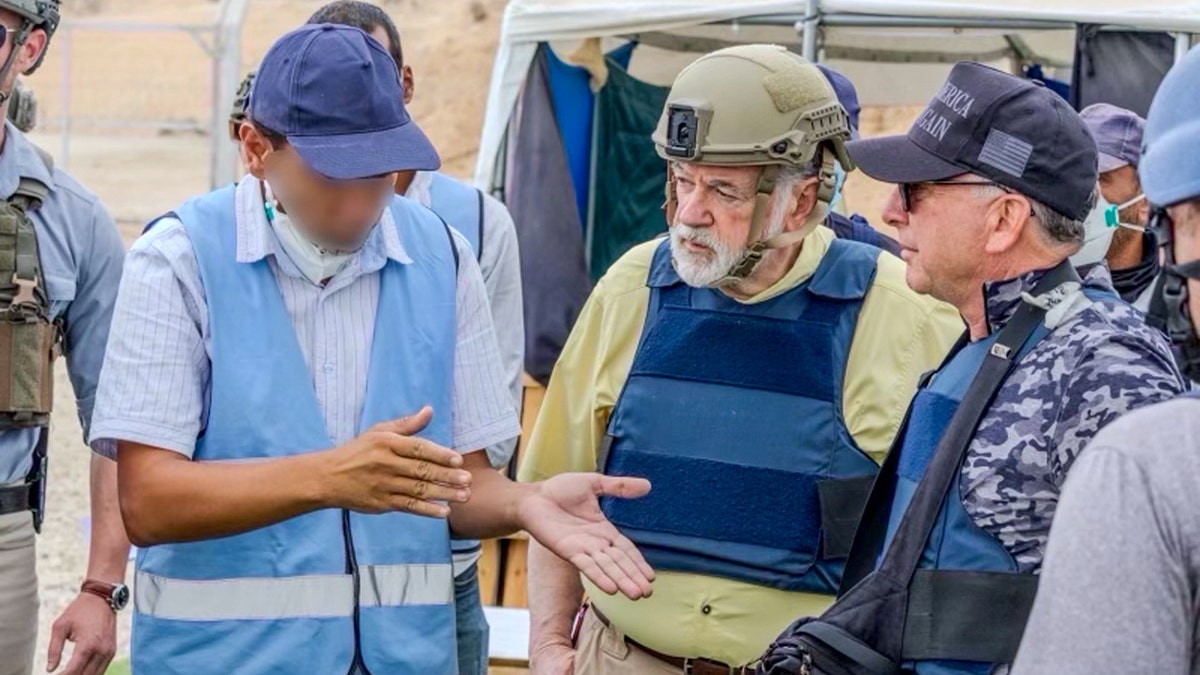
U.S. Ambassador to Israel Mike Huckabee and Special Envoy Steve Witkoff speak with an aid worker in Gaza as they visit a distribution site run by the U.S.- and Israeli-backed Gaza Humanitarian Foundation. (Gaza Humanitarian Foundation)
David Makovsky, director of the Koret Project on Arab-Israel Relations at the Washington Institute for Near East Policy, said blame for the crisis should not be placed on one party but that «by bringing the U.N.’s own records to bear we can level-set the conversation.
CLICK HERE TO GET THE FOX NEWS APP
«There is a whole debate about GHF, which will not be settled today,» he noted. «Yet, in a humanitarian emergency crisis, feeding people should take absolute top priority and I think it is incumbent for the U.N. and GHF to work together to feed people.
«I hope that by bringing in lots of food into Gaza you can help innocent suffering people and also dramatically bring down black market rates exploited by Hamas which they use to control their people,» said Makovsky.
united nations,israel,middle east,terrorism,conflicts
INTERNACIONAL
El rey Carlos III une religiones mientras su familia se desmorona
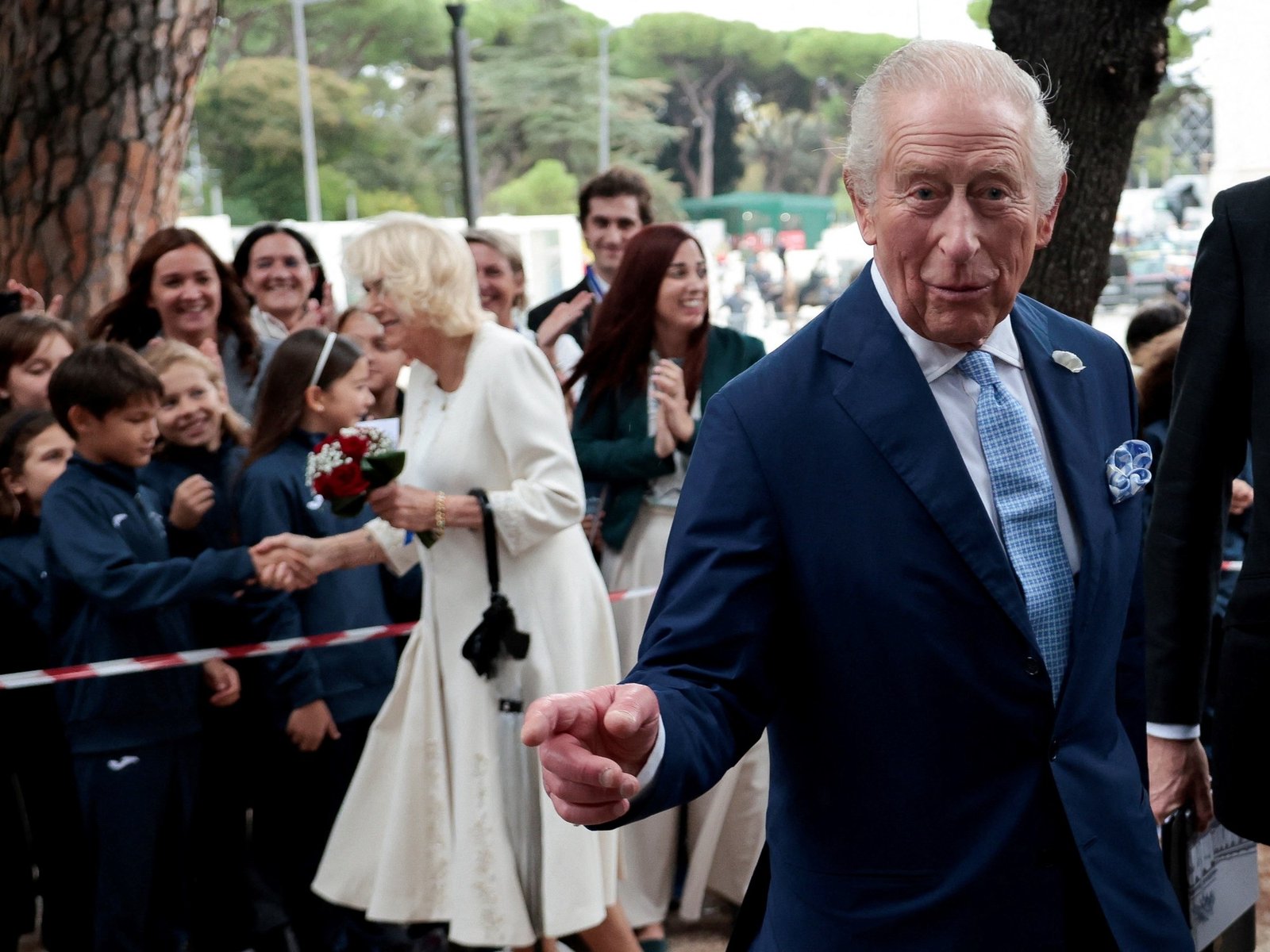
Cuando la Iglesia Anglicana y el Vaticano están más unidos que nunca después de 500 años de separación y el rey Carlos busca remarcar este gesto como fundamental en su reinado, la Familia Real británica se sumerge en una de sus peores crisis de supervivencia.
Inglaterra se separó de la Iglesia Católica bajo Enrique VIII en 1534, cuando Enrique estableció la precursora de la Iglesia de Inglaterra (casándose con Ana Bolena) y se autoproclamó Gobernador Supremo. Ni Enrique ni ninguno de sus predecesores, desde 1066, se reunió jamás con el Papa. Esta separación se mantuvo fiel hasta el reinado de la reina Isabel II, quien se reunió con cuatro Papas, pero se negó a rezar con ellos.
Este jueves todo cambió. El rey Carlos III y la reina Camila, vestida de negro y con mantilla de Philip Treacy, rezaron junto al papa León XIV en inglés, en la espectacular Capilla Sixtina, pintada por Miguel Ángel, por primera vez en el Vaticano. Un coro acompañó este momento histórico.
Un acto mayor para el gobernador de la Iglesia Anglicana, que no quería ver este gesto monumental religioso de su reino oscurecido por los escándalos de la disfuncional familia Windsor que lidera.
Una coreografía solemne y espectacular en Roma, que no coincide con las denuncias del Caso Epstein, las memorias de una supuesta víctima del príncipe Andrés que se suicidó tras ser abusada sexualmente y la renuncia de Andrew a su título de duque de York.
En el Royal Lodge, donde el príncipe Andrés se ha refugiado y su ex esposa, Fergie, lo acompaña, hay otro drama paralelo. Fergie se encuentra al borde de la «crisis» nerviosa porque han sumergido a las princesas Eugenia y Beatriz en el escandaloso Caso Epstein. Su hermana Jane viajó desde Australia, especialmente para acompañarla. Fergie tiene cáncer de mama y metástasis de piel.
Pero es la propia relación de Sarah con el pedófilo Epstein la que ha visto cómo su vida pública se desmoronaba rápidamente. Recientemente se ha publicado un correo electrónico que ella envió al financiero caído en desgracia, tras declarar públicamente que había cortado el contacto con él, en el que llamaba a Epstein «un amigo supremo». Su vocera afirmó que envió el correo electrónico por miedo a las amenazas a su familia, a sus hijas y a que la enjuiciara.
Una amiga de Sarah Ferguson ha revelado que está al borde de una crisis nerviosa tras ver a sus hijas, «angustiadas», envueltas en el escándalo que ha estallado por su asociación con Epstein. Hay fotos que muestran a Fergie y las dos princesas junto a Epstein, como las primeras visitantes después de que salió de la cárcel por abuso sexual.
Si bien el palacio trató de acelerar las medidas contra los duques de York días antes del viaje del rey al Vaticano, las repercusiones siguen. El Parlamento va a quitarle el título de príncipe a Andrés, hermano del rey y ex heredero al trono.
Aunque tenga un contrato hasta su muerte en la ex casa de su abuela, los cortesanos, el príncipe Guillermo y los diputados conservadores quieren desalojarlo del Royal Lodge, su casa de 30 habitaciones y 37 hectáreas. Ellos quieren convertirlo en otro exiliado, como el rey Eduardo, cuando abdicó para casarse con Wallis Simpson, una norteamericana divorciada. Los exiliaron en París como duques de Windsor.
Esta vez el lugar puede ser diferente. Como el rey Juan Carlos de España, el príncipe Andrés podría terminar en un dorado palacio de Abu Dabi, alojado por el Emir de Qatar y con los gastos pagos. Nadie sabe si tiene o no dinero, si heredó o no a su madre, la reina Isabel II, de quien era su hijo favorito. El rey Carlos le cortó el millón de dólares anuales que le ofrecía desde que llegó al trono.
La policía metropolitana confirmó que estaba investigando informes de que Andrés le había ordenado a su guardaespaldas personal que desenterrara información sucia sobre su acusadora sexual.
Al mismo tiempo, el rey Carlos teme por su hermano y su salud mental. Su inquietud es que esta situación lo lleve al suicidio o a una internación, que haría igual daño a los Windsor. Pero su hijo Guillermo, futuro heredero, cree que Andrés y Fergie deben abandonar el reino y no le permitirá asistir a su coronación ni utilizar los palacios reales. Se inquieta con que aparezca más información sobre Epstein.
Se espera que el Parlamento examine su contrato de arrendamiento a largo plazo, con una renta mínima, en Royal Lodge, una vivienda que ha ocupado durante décadas sin pagar alquiler. El primer ministro Keir Starmer ha expresado su apoyo a los parlamentarios, incluidos los pedidos de que el Príncipe responda preguntas directamente en el Parlamento.
Fergie y Andrés saben que tienen la culpa. Pero aún sienten que ahora los están castigando sin piedad, cuando están deprimidos y abandonados. Nadie sabe hoy cómo será su futuro y si Andrés será juzgado o no.
INTERNACIONAL
White House says California granted license to illegal immigrant trucker charged in fatal DUI crash
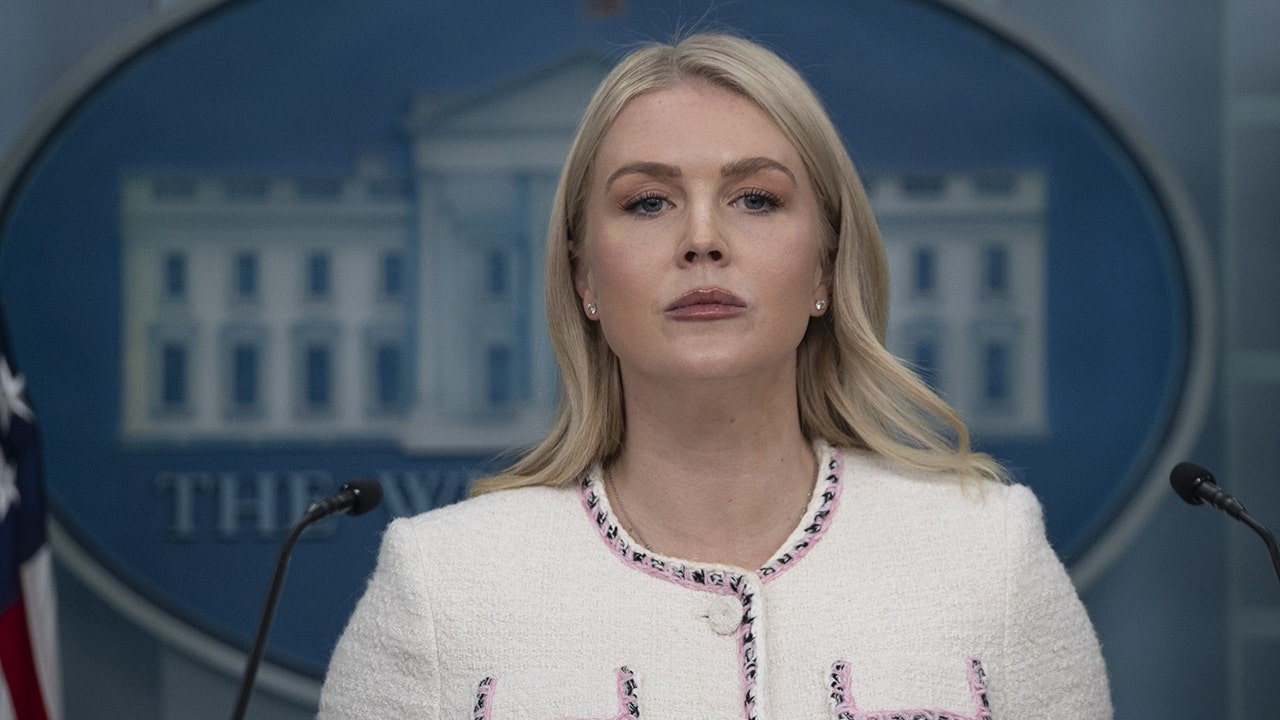
NEWYou can now listen to Fox News articles!
White House press secretary Karoline Leavitt told reporters Thursday that California issued a commercial driver’s license (CDL) to an illegal immigrant truck driver charged in a fatal DUI crash that killed three people.
«I can confirm that California gave this individual a license, and it is something that the Department of Transportation has already looked into,» Leavitt said. «I know Secretary Duffy, who’s doing a phenomenal job, has spoken on this many times in the crackdown that the Department of Transportation is taking on these licenses that are wrongfully being issued to people who clearly do not deserve to uphold these positions.»
Leavitt said the individual first entered the U.S. illegally in 2022 «and was released into our country by the previous administration.»
She added that the Department of Transportation (DOT) was cracking down on the issuing of CDLs amid a «disturbing pattern» of them being given to illegal immigrants.
ILLEGAL IMMIGRANT TRUCKER ACCUSED IN FATAL CALIFORNIA CRASH RELEASED BY BIDEN ADMIN AFTER 2022 BORDER CROSSING
Reporters raise their hands to ask a question as White House press secretary Karoline Leavitt speaks during a press briefing at the White House on Thursday, Oct. 23, 2025, in Washington, D.C. (Evan Vucci/AP Photo)
Jashanpreet Singh, a 21-year-old illegal immigrant from India, was accused of driving while intoxicated and causing a crash that left three people dead. He has since been arrested on suspicion of gross vehicular manslaughter while intoxicated after allegedly plowing his big rig into slow-moving traffic on the I-10 Freeway in San Bernardino County.
Multiple federal law enforcement sources told Fox News that Singh was first encountered by Border Patrol agents in California’s El Centro Sector in March 2022 and released into the interior of the country pending an immigration hearing.
Police say Singh never hit the brakes before slamming into the traffic jam, citing toxicology tests that confirmed impairment.
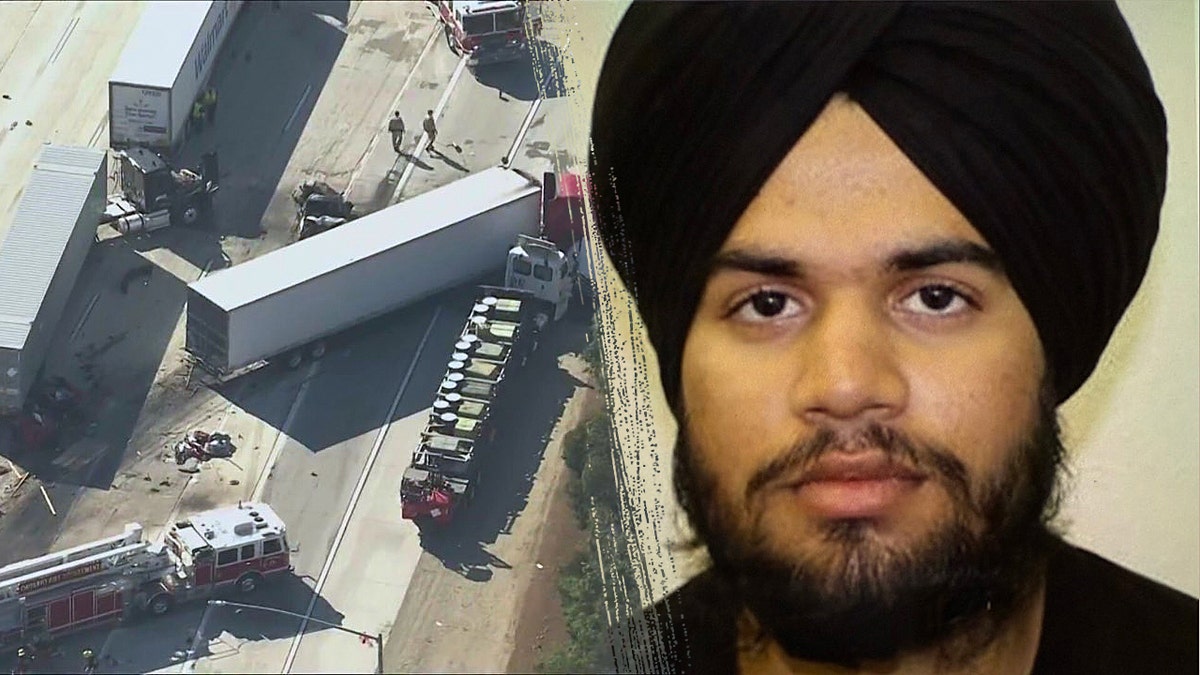
Jashanpreet Singh, an illegal immigrant from India, was arrested in connection with a deadly crash on the I-10 Freeway in San Bernardino County, Calif., on Oct. 21, 2025. (Bill Melugin/via X,ICE)
«This is a tragic situation,» a spokeswoman for Gov. Gavin Newsom said to Fox News Digital. «And as with every tragedy over the last ten months, Secretary Noem has ordered Secretary Duffy to look for every opportunity to manipulate the facts to score cheap political points, but the FEDERAL government needs to look within before they cast blame outside.»
«The FEDERAL government approved and renewed this individual’s FEDERAL employment authorization multiple times – which allowed him to obtain a commercial driver’s license in accordance with FEDERAL law,» she added.
The Biden administration approved Singh’s work permit. Illegal immigrants can apply for work authorization 180 days after making their asylum claim. Singh was caught and released at the border in March 2022. He has been in asylum proceedings ever since. Additionally, acquiring a work permit would not require California to issue an individual a CDL, nor would it give an individual the right to one.
ILLEGAL IMMIGRANT TRUCKER ACCUSED OF KILLING THREE PEOPLE FAILED ENGLISH, ROAD TEST SIGNS: DOT
The incident comes just months after a similar fatal crash involving an illegal immigrant truck driver.
On Aug. 12, Harjinder Singh allegedly made an illegal U-turn in an unauthorized area on the Florida Turnpike, colliding with a minivan and killing three people. He was arrested in California, where he fled after the deadly crash, and was extradited to Florida.
Singh crossed into the U.S. illegally in 2018 through the southern border and was able to obtain a CDL in California. The first Trump administration rejected his request for work authorization in September 2020, Department of Homeland Security (DHS) assistant secretary Tricia McLaughlin said.
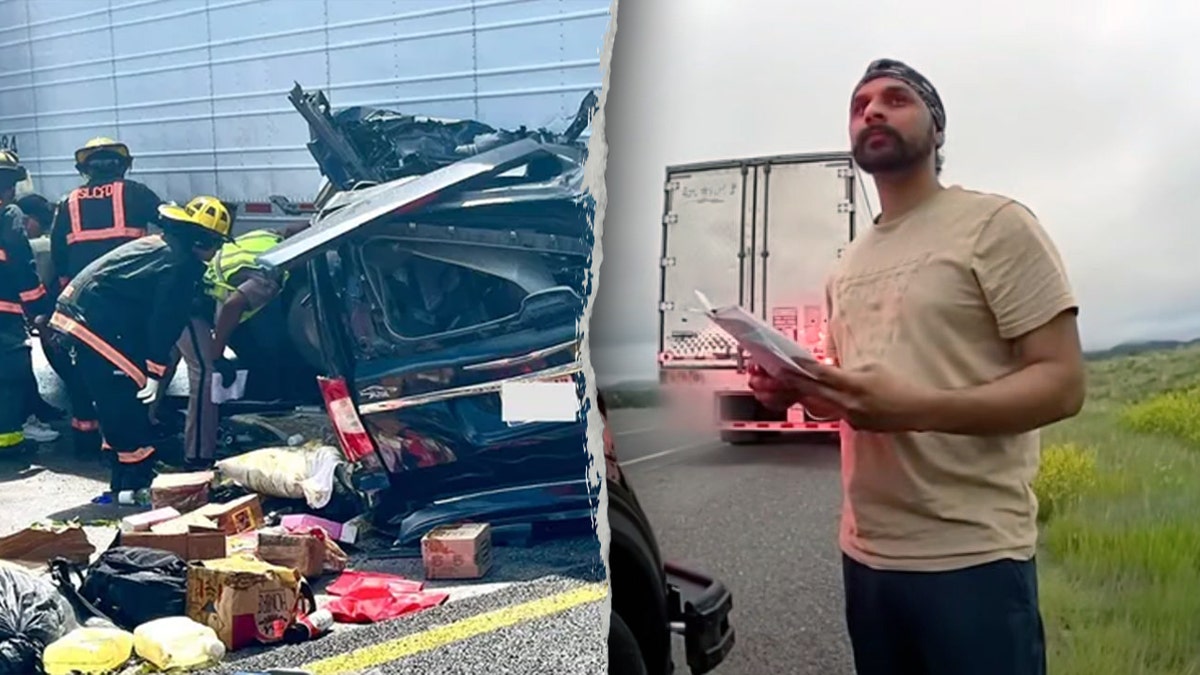
A composite image shows firefighters responding to a fatal Florida crash linked to Harjinder Singh’s truck and body camera of Singh being cited for speeding in New Mexico on July 3, 2025. (St. Lucie County Sheriff’s Office; New Mexico State Police)
CLICK HERE TO GET THE FOX NEWS APP
On Oct. 15, Transportation Secretary Sean Duffy announced that the Federal Motor Carrier Safety Administration (FMCSA) would withhold over $40 million from California after a probe revealed that the state failed to comply with English Language Proficiency standards.
In response to a video of the incident, Duffy said, «This is exactly why USDOT has withheld $40 MILLION from California for failure to comply with our rules to protect drivers. We cannot allow our roads to be a dangerous place!»
Fox News Digital reached out to DOT for comment.
illegal immigrants,white house,immigration
INTERNACIONAL
Zelensky se reúne en Londres con la Coalición de Voluntarios para reforzar apoyo militar a Ucrania y aumentar la presión sobre Rusia

El presidente de Ucrania, Volodimir Zelensky, participa este viernes en Londres en una reunión de la Coalición de Voluntarios, formada sobre todo por países europeos, para analizar cómo reforzar el apoyo militar y económico a Ucrania y aumentar la presión sobre Rusia para poner fin a la guerra.
El primer ministro británico, Keir Starmer, presidirá la cita presencial y telemática en el Ministerio de Exteriores, a la que también asistirán en persona los primeros ministros de Dinamarca, Mette Frederiksen, y Países Bajos, Dick Schoof, así como el secretario general de la OTAN, Mark Rutte, mientras que otros veinte líderes se unirán a distancia.
Starmer urgirá a los socios a tomar medidas para eliminar el petróleo y el gas rusos del mercado, usar los activos rusos confiscados para financiar la defensa ucraniana y enviar armamento de largo alcance, según un comunicado difundido por Downing Street.
El líder laborista afirmó que “el único que no quiere detener la guerra es Putin” y añadió: “Una y otra vez le ofrecemos la oportunidad de poner fin a su invasión innecesaria, detener las matanzas y retirar las tropas, pero él rechaza repetidamente estas propuestas y cualquier posibilidad de paz”.
La Coalición, creada en marzo pasado por el Reino Unido y Francia para coordinar la ayuda a Ucrania y planear su seguridad tras la guerra, usará esta reunión para «fijar prioridades prácticas de cara al invierno“, ante la intensificación de los ataques rusos contra objetivos civiles e infraestructuras críticas.
El Gobierno británico aprovechará la cita para anunciar la entrega anticipada de 140 misiles ligeros multirrol a Kiev, dentro de un contrato de 1.600 millones de libras (1.800 millones de euros) suscrito en marzo que contempla un total de más de 5.000 unidades. Starmer también dijo que se acelerará un programa de fabricación de misiles de defensa aérea, con el objetivo de suministrar más de 5.000 armas.
La reunión se produce después de que Estados Unidos anunciara el miércoles sanciones contra las petroleras rusas Rosneft y Lukoil, “ante la falta de compromiso de Rusia con un proceso de paz”.
Por su parte, la Unión Europea aprobó el jueves el decimonoveno paquete de sanciones contra Rusia, que avanza a 2027, un año antes de lo previsto, incluyendo el veto al transporte del gas natural licuado (GNL).
Starmer instó a aprovechar “el acto decisivo” del presidente estadounidense, Donald Trump, al sancionar a Moscú, y “aumentar la presión sobre Rusia para que se siente a negociar”. Por su parte, Zelensky ha solicitado durante semanas más armas de largo alcance, esperando capitalizar la creciente presión de Trump sobre Putin, tras un reciente viaje a Washington en el que no logró obtener misiles Tomahawk, pese a sus múltiples pedidos.

El Reino Unido y Francia ya suministran a Ucrania misiles Storm Shadow y Scalp, mientras que Ucrania produce sus propios misiles Flamingo y Neptuno. Kiev también ha mostrado interés en los misiles alemanes Taurus, aunque Berlín ha resistido debido a posibles tensiones con Rusia.
Zelensky también destacó la importancia de financiar la defensa ucraniana a largo plazo. La UE encargó a la Comisión Europea que avance con opciones para financiar Ucrania durante dos años, dejando abierta la posibilidad de un préstamo de 140.000 millones de euros respaldado por activos rusos congelados.
El presidente del Consejo Europeo, Antonio Costa, afirmó que el bloque “se compromete a asegurar que las necesidades financieras de Ucrania estarán cubiertas durante los próximos dos años” y advirtió a Rusia: “Ucrania tendrá los recursos financieros que necesita para defenderse”.
La cita de Londres busca fortalecer la cooperación internacional y coordinar la entrega de armamento, sanciones económicas y apoyo financiero para Ucrania, en un momento en que la guerra entra en su cuarto invierno y Moscú continúa atacando infraestructuras críticas del país con misiles y drones.
(Con información de AFP, EFE y EP)
Europe,Military Conflicts

 DEPORTE2 días ago
DEPORTE2 días agoUniversidad de Chile vs. Lanús, por la Copa Sudamericana: día, horario y cómo verlo por TV

 CHIMENTOS2 días ago
CHIMENTOS2 días agoAdabel Guerrero confesó de qué famosa está enamorada y que le encantaría tener relaciones: «La China Suárez me sorprendió con su belleza»

 ECONOMIA3 días ago
ECONOMIA3 días agoScott Bessent oficializó el swap con la Argentina y afirmó: “No queremos otro Estado fallido en América Latina”


























